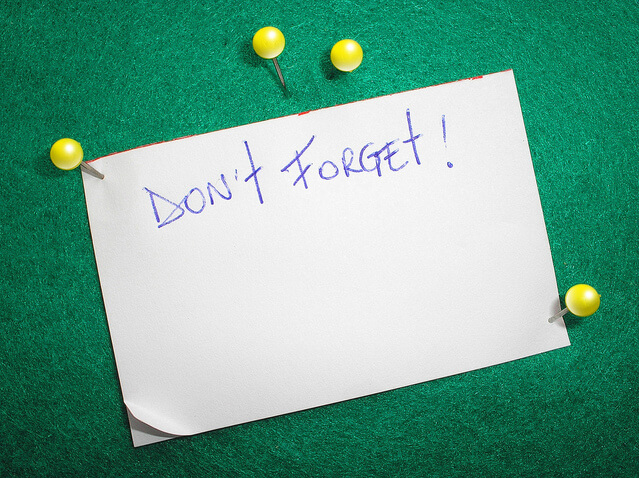Chunking Psychology: Definition and Examples
Chunking is a memory technique that involves grouping information into smaller, meaningful clusters that are easier to remember. Breaking down complex information into smaller, more manageable units can help improve memory retention. By organizing information into categories, such as numbers or concepts, we can make it more memorable and increase our ability to recall it…

Chunking is a memory technique that involves grouping information into smaller, meaningful clusters that are easier to remember. Breaking down complex information into smaller, more manageable units can help improve memory retention.
By organizing information into categories, such as numbers or concepts, we can make it more memorable and increase our ability to recall it later on.
Whether trying to remember a grocery list or studying for an exam, chunking can be an effective technique to improve our short-term memory and help us retain information more efficiently.
History of Chunking in Psychology
The concept of chunking, which refers to the process of grouping or organizing information into meaningful units to improve memory retention, was first introduced by psychologist George A. Miller in a seminal paper published in 1956.
In the paper titled “The Magical Number Seven, Plus or Minus Two: Some Limits on Our Capacity for Processing Information,” Miller argued that human beings can process only a limited amount of information at a time.
Specifically, he suggested that the average person could remember seven (plus or minus two) items of information at a time.
Miller proposed that chunking could overcome this limitation by reducing the amount of information needed to be remembered. By grouping individual items into meaningful clusters, he suggested, people could remember more information while staying within their working memory’s limits.
Since Miller’s original paper, the concept of chunking has been extensively studied and applied in a wide range of contexts. Researchers have explored the neural basis of chunking, identified different types of chunks, and investigated how chunking can be used to improve learning and memory in a variety of settings.
Today, chunking remains an important concept in the field of cognitive psychology and continues to be used as a practical tool to improve memory performance.
Why Chunking Works
Chunking is an effective memory strategy because it:
- Reduces cognitive load
- Creates meaningful associations
- Improves retrieval cues
Using chunking techniques to organize and process information, we can improve our memory performance and better retain the information we need to learn and remember.
Chunking Reduces Cognitive Load
By breaking down long strings of information into smaller, more manageable chunks, we reduce the cognitive load required to remember the information. Our working memory has a limited capacity, and chunking helps us stay within that capacity by reducing the amount of information we need to remember at any given time.
Chunking Gives Context
Chunking can make information more memorable by giving it meaning and context. By grouping related items or concepts together, we create meaningful associations that help us remember the information more easily.
For example, suppose we’re trying to remember a list of grocery items. In that case, grouping them by category (e.g., fruits, vegetables, dairy) gives us a framework for organizing and processing the information, which can help us remember it more effectively.
It Improves the Accessibility of Memories
Chunking can improve our ability to retrieve information from memory by making it easier to access. By organizing information into meaningful clusters, we create mental cues or triggers to help us retrieve the information more quickly and accurately.
Examples of Chunking
Chunking can be used in a variety of ways:
Break Down Information Into Smaller Chunks
One common way to use chunking to improve memory is to break down long strings of information into smaller, more manageable chunks.
For example, if you’re trying to memorize a long phone number like 555-1234, you might find it easier to remember if you break it down into three smaller chunks: 555, 12, and 34.
Group Similiar Information
Another way to use chunking is to group related items or concepts together to make them more memorable.
For example, if you’re trying to remember a list of grocery items, you might group them by category (e.g., fruits, vegetables, dairy) to help you remember them more easily.
Similarly, when learning new information, grouping related concepts or ideas together into meaningful clusters can be helpful. This can help you better understand and remember the information by giving you a framework for organizing and processing it.
Many students use chunking to break down complex information into smaller, more manageable pieces when studying for exams. This can involve breaking down textbook chapters into smaller sections or breaking down lists of vocabulary words into groups of related terms.
Incorporate Acronyms
You might also try incorporating mnemonic devices to help you remember specific chunks of information.
For example, you might create an acronym to help you remember a specific chunk of related information. The acronym OCEAN, for example, can help you remember each of the personality dimensions on the Big 5 theory of personality (Openness, Conscientiousness, Extraversion, Agreeableness, and Neuroticism).
How to Chunk to Improve Memory
In many cases, chunking comes naturally. Our minds are naturally primed to spot patterns and group similar information. Some specific strategies that can help you better chunk for memory include:
Identify the Main Points
Before you begin to chunk information, take a moment to identify the key points or concepts that you need to remember. This will help you create meaningful clusters of information that are more memorable and easier to retrieve later on.
Break Information Into Smaller Chunks
As you begin to group information into clusters, try to break it down into smaller, more manageable chunks. This might involve breaking down long strings of numbers, like phone numbers or credit card numbers, into smaller sets of digits that are easier to remember.
Use Visual Aids
Visual aids can be a helpful way to chunk information and create meaningful associations between different concepts or ideas.
Tools you might use include:
- Mind maps to visually represent related concepts
- Infographics to present key points in organized chunks
- Flashcards to focus on specific chunks of information
- Color coding to organize notes into related chunks
- Timelines to showcase specific time periods
- Storyboards to help group information together into narrative sequences
Group Related Items Together
When chunking information, try to group related items or concepts together. For example, if you’re trying to remember a list of vocabulary words, group them by category or part of speech to create meaningful clusters.
Repeat Information
Repetition is an important part of the chunking process, as it helps to reinforce the connections between different pieces of information. Try repeating the clusters of information to yourself, or writing them down multiple times to help them stick in your memory.
Practice Regularly
Regular practice is key to effective chunking. Make a habit of chunking information on a regular basis. Some ideas for when you might utilize chunking include when you are:
- Trying to learn new vocabulary words
- Memorizing a speech
- Study for an exam
- Learning a new language
- Memorizing a list
With practice, you’ll become more adept at organizing and processing information in a way that is most effective for you.
Summary
Chunking is a powerful memory technique that can help us better organize and process information, making it easier to remember and retrieve later on. By breaking down long strings of information into smaller, more manageable chunks, we reduce cognitive load and create meaningful associations that help us remember the information more effectively.
Whether you’re trying to memorize a long phone number, learn new vocabulary words, or study for an exam, chunking can be a valuable tool in your memory toolkit. By following some simple tips, such as breaking information into smaller chunks, using visual aids, and repeating information, you can become more adept at organizing and processing information in a way that is most effective for you.
So next time you need to remember a list of items or learn new information, give chunking a try. With practice and persistence, you’ll be amazed at how effective this simple technique can be in helping you improve your memory and retention of information.
Sources:
Gilchrist AL. How should we measure chunks? a continuing issue in chunking research and a way forward. Front Psychol. 2015;6:1456. Published 2015 Sep 25. doi:10.3389/fpsyg.2015.01456
Jones G. Why Chunking Should be Considered as an Explanation for Developmental Change before Short-Term Memory Capacity and Processing Speed. Front Psychol. 2012;3:167. Published 2012 Jun 15. doi:10.3389/fpsyg.2012.00167
Thalmann M, Souza AS, Oberauer K. How does chunking help working memory?. J Exp Psychol Learn Mem Cogn. 2019;45(1):37-55. doi:10.1037/xlm0000578





